
A Determined Descendant and a Navy Hospital's Response to COVID-19
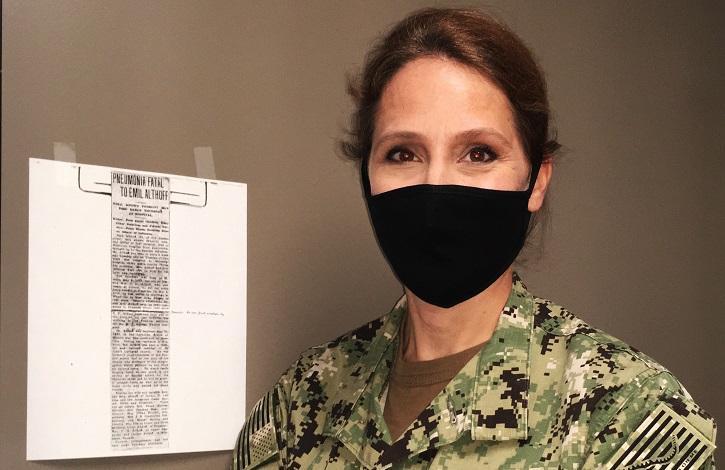
Capt. Juliann Althoff, chief medical officer for Naval Medical Center San Diego, stands in her office, June 5, 2020, next to a copy of the obituary of her great grandfather, Emil Althoff, who died as a result of the H1N1 flu during the Influenza Pandemic of 1918. (U.S. Navy photo by Mike Alvarez, NMC-San Diego)
SAN DIEGO - On a fateful Thursday morning at Memorial Hospital in Fremont, Ohio, Emil Althoff became one of at least 50 million estimated to die from the H1N1 flu virus in the deadliest pandemic of the 20th century, the influenza pandemic of 1918, sometimes referred to as the “Spanish Flu.”
The 36-year-old W.T. Raleigh Medical Company employee was survived by his wife, two sons and two daughters, who had all survived after contracting the virus.
In an era of limited technology, no vaccine against the virus or antibiotics to treat secondary bacterial infections, the 1918 flu pandemic claimed young and old, weak and strong, sick and healthy, at rates unseen today.
It wreaked havoc on individuals, families and communities, its impacts felt by generations, its lessons learned.
And while we now enjoy the benefits of a century long stretch of medical advancements, the life-sparing non-pharmaceutical measures employed against the deadly pathogen of 1918 are the same measures employed today in the fight against the novel Coronavirus (COVID-19): social distancing, hand hygiene, surface disinfection, avoiding mass gatherings, and wearing face coverings, according to Capt. Juliann Althoff, chief medical officer for Naval Medical Center San Diego (NMCSD).
“The fundamental public health measures remain the same,” said Althoff, a native of Sylvania Ohio, and great granddaughter of Emil Althoff, whose obituary hangs on the wall just inside the entrance to her small narrow office as she mans the front lines against today’s pandemic.
“Every day, my great grandfather’s story motivates me to do better. It reminds me in a very personal way, why the work we are doing right now is so important,” said Althoff. “I feel I have an opportunity and an obligation to keep this pandemic from affecting more lives, and impacting more families.”
As of May 17, the COVID-19 Pandemic has claimed 307, 565 lives worldwide, according to the World Health Organization.
No stranger to pandemics, Althoff is a public health physician who served as the preventive medicine and force health protection officer for the Okinawa, Japan-based III Marine Expeditionary Force, where she helped develop the U.S. Pacific Command biohazard response plan, the template for DoD pandemic influenza plans, later implementing it during the 2009 H1N1 Pandemic often called the “Swine Flu.” The virus resulted in an estimated worldwide death toll of up to 575,400 within a year of its initial outbreak, according to the CDC.
Althoff and her team at the Quality Management directorate serve as a locus of coordination for clinical support operations, ensuring that patients receive the highest standard of care through quality assurance and patient safety initiatives. “As the CMO, one of my big jobs is coordinating, trying to help align and prioritize efforts across different directorates,” said Althoff, adding that despite the challenges posed by the COVID-19 pandemic, the patient care and safety mission continues.
“Ensuring the staff remains safe during this pandemic has become an even higher priority,” she said. “We need to take care of those who are the most at risk in service to others, and we must ensure that the care we are providing, albeit less in person and more virtual, is done in a safe manner.”
In preparation, Capt. Bradford Smith, NMCSD’s commanding officer, established three objectives: 1) protect the staff, 2) protect and care for the patients and 3) ensure personal protective equipment (PPE) is available now and in the future.
To achieve Smith’s objectives, NMCSD assembled its Hospital Incident Command System (HICS) Team on March 10, the day after San Diego County Health and Human Services reported the region’s first presumptive positive case, a woman in her 50s. “We knew we would see cases in San Diego County and were prepared for them,” said Wilma Wooten, M.D., M.P.H., County public health officer.
NMCSD implemented measures to prevent spread in accordance with CDC and Defense Health Agency guidelines. Staff and patients adjusted to the measures as the Balboa Café became carryout only, social distancing implemented, face coverings were mandated, telework encouraged, virtual medical appointments were scheduled, and non-urgent patient services postponed, while staff continually wiped door knobs and counter tops throughout the 1.2 million square foot facility and 10 branch health clinics.
Much was enacted on short notice and the word had to reach thousands quickly.
“My previous experiences remind me how important communications are, not only with patients, but also staff, and how efforts must be coordinated, agile and responsive in a rapidly evolving situation,” said Althoff, whose penchant for risk communication was forged in 2011 as the U.S. Pacific Command’s preventive medicine and force health protection officer involved in coordinating the medical response to the tsunami-induced radiological emergency in Japan dubbed Operation Tomodachi.
Providing clear and concise information to stakeholders was one of the efforts requiring the most attention, according to Chris Springer, emergency management specialist and lead advisor to the HICS Team. “You need to spread the word to prevent the spread,” said Springer, a retired Chief Petty Officer and native of Detroit, Michigan.
With national infection rates on the rise, the entire staff rallied to tackle the logistical and infrastructural feats required to meet a potential spike in COVID-19 patients.
The Facilities Management department teamed with the Directorate for Nursing Services, Infection Control, Patient Safety and Risk Management, Infectious Diseases department, and others to increase response capacity through training, development of procedures, best practices, and the conversion of spaces throughout the hospital’s wards and Emergency department.
“NMCSD has an innovative Facilities department that was able to quickly transform spaces into negative-pressure rooms, wards, and operating rooms specifically to take care of COVID-19 patients,” said Cmdr. Jerry Cook, HICS Team operations section chief, and dual board certified occupational and preventive medicine specialist. Cook, a native of Fairfield, California, also attributes much of NMCSD’s success to a strong Infectious Diseases department with experts, such as Cmdr. Drake Tilley, infectious disease specialist and chair of the NMCSD Infection Prevention and Control Committee, to provide advice on triaging, patient management, infection control measures, training and resources to guide staff and educate patients.
On March 10, a desert-tan tent stood on the Emergency Room (ER) parking lot surrounded by orange cones and yellow traffic barriers. With red letters on white background, a square sign hung on the perimeter reading, “Emergency Room Still Open.” An unignorable harbinger of the “new normal,” the tent would serve as a stop where patients meeting the current CDC criteria could be screened for COVID-19 without exposing others throughout campus.
Nurses, corpsmen and doctors not normally assigned to the Emergency Room, were trained, fitted for PPE, and pitched in to bolster the tent operations, providing hundreds of hours in support. Since then, the screening tent spaces have been expanded with the addition of two wings.
“This pandemic caused us to rethink the method by which we provided care to our patients. The tent operation is emblematic of that response. To care for the military community, we quickly and safely modified our care model,” said Capt. Devin Morrison, NMCSD’s executive officer and Incident Commander for the HICS Team.
On March 16, yellow police tape cordoned the campus with signs directing incoming staff, patients and visitors to one of five entry points, where masked Corpsmen shaded by pop-up canopies would ask a series of questions to screen for COVID-19-related symptoms and past travel per CDC guidelines. NMCSD has since refined its number of entry points to four, instituted mandatory temperature checks for all entrants, and random bag checks for those exiting to protect PPE stocks.
On March 30, NMCSD’s support to the fleet and its patients became even more visible when it debuted its drive-thru testing service at the patient parking garage, and NMCSD sent its final wave of Sailors to the USNS Mercy (T-AH 19) hospital ship.
At the drive-thru testing site, vehicles were greeted at the entry point marked by a blue pop-up canopy over a table manned by medical staff in light blue surgical gowns, masks and latex gloves for a pre-test screening questionnaire. If directed, the patients could ride into the garage to the next station.
That same day while cars, trucks and vans rolled in the drive-thru, nearly 200 sea bag-laden Sailors rolled out, as they emptied the crowded Flag Circle courtyard on the other end of campus saying goodbye to family and friends before boarding their buses for the trip north to Los Angeles, where they joined more than 650 of their shipmates from NMCSD on the pier-side Mercy until mid-May to support local medical facilities responding to the COVID-19 Pandemic.
When it came to the nationwide supply chain challenge, NMCSD was not immune. “During the COVID-19 response, there have been numerous logistical challenges, specifically the ability to procure critical PPE,” said Lt. Devon Graham, material operations division officer and native of Yuma, Arizona. “As most people know, it became nearly impossible to find ways to purchase various supplies, such as (hand sanitizer), masks, gowns, etc.”
To beat the supply curve, Smith commissioned a multidisciplinary working group that created innovative strategies to extend stocks, providing maximum protection for the staff and patients, and support to the fleet through close monitoring, prioritization, adjustments to clinical operations, and partnerships throughout the community.
“To protect our staff and patients, we must ensure that PPE is available for the duration of the pandemic,” said Smith.
As a former Navy fighter pilot accustomed to precisely monitoring the staggering gas guzzling rates of the F/A-18 Hornets he flew, “what’s the burn rate?” was a question Smith asked the logistics chief nearly every morning, keeping close tally on current and projected PPE requirements.
“During the COVID-19 Pandemic, NMCSD has provided support to several different areas of the fleet, ships on the waterfront, personnel quarantined, and other commands. We as a command have been able to conserve supplies in a smart efficient way, where we are able to support ourselves and other commands facing outbreaks,” said Graham. “NMCSD has also received assistance from different commands. These partnerships have helped strengthen our relationships with the fleet as a whole, especially from a logistical standpoint.”
Throughout the pandemic, the medical center has continued to meet its mission with success.
“Despite the pandemic, we’re providing world-class care, we’re deploying on short notice, we’re supporting our warfighters, we’re protecting our staff and patients, and it’s all thanks to our amazingly innovative active duty and civilian staff,” said Smith.
Disclaimer: Re-published content may be edited for length and clarity. Read original post.
Searching for clues under the microscope to understand COVID-19
Article
6/10/2020

The Joint Pathology Center plays a unique role in the fight against COVID-19
NBHC Kingsville recognized as ‘Best of the Best’ for patient satisfaction
Article
6/8/2020
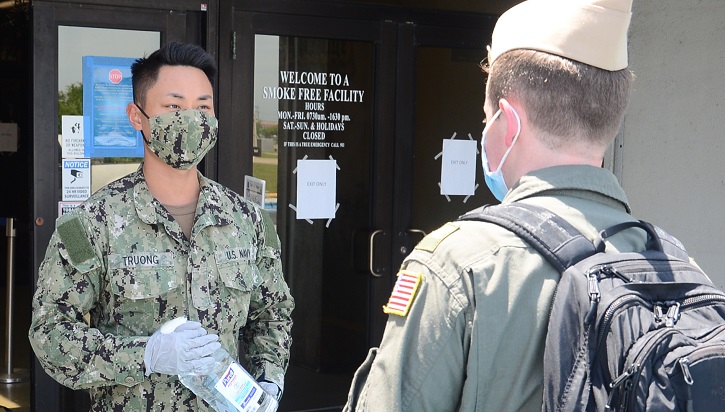
The Best of the Best Report is updated quarterly, and contains the top performing clinics, providers, and clerks & receptionists.
Genetic sequence data for SARS-CoV-2
Infographic
6/5/2020

Genetic sequence data for SARS-CoV-2, the virus that causes #COVID19, plays a vital role in force health protection efforts within the DoD. To jumpstart sequencing efforts, the Armed Forces Health Surveillance Branch's Global Emerging Infections Surveillance and Response applied a collaborative approach to sequencing capabilities. Resulting sequence data will provide critical information about transmission patterns, track diagnostic effectiveness, and guide the development and evaluation of medical countermeasures.
DoD Establishes Collaborative Virus Genetic Sequencing Capability for COVID-19
Article
6/5/2020
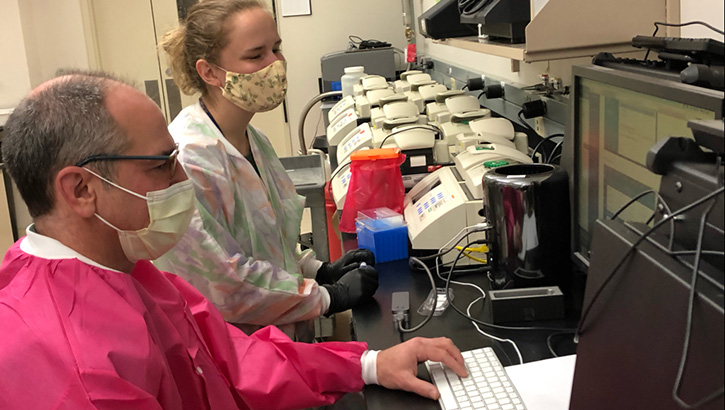
COVID-19 sequencing process will provide military commanders and other DoD leadership with critical information to guide force health protection decision-making.
Putting talent to work
Article
6/5/2020
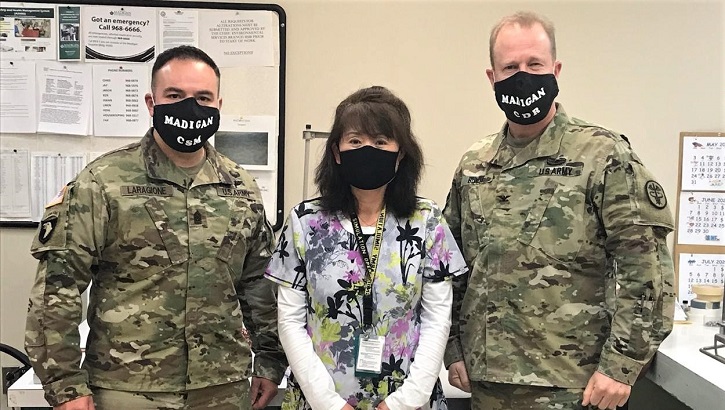
One seamstress took it upon herself to create face coverings for her colleagues.
WRNMMC Operates Drive-Up Immunization Clinic
Article
6/3/2020

Parents and others (are encouraged) to maintain their immunization health during COVID-19.
Communication to ABA Providers Regarding Continued Temporary Authorization to Utilize Telehealth for CPT Code 97156 During the COVID-19 National Emergency
Publication
6/3/2020
TRICARE is announcing the continuation of the temporary exception to policy regarding the use of synchronous telehealth (TH) capabilities (both audio and video) for Applied Behavior Analysis (ABA) Family Adaptive Behavior Treatment Guidance services specifically during this COVID-19 pandemic.
TRICARE Reserve Select (TRS) Health Plan Reinstatement During COVID-19 National Emergency
Fact Sheet
6/2/2020
Fact sheet explaining that explaining that TRICARE Reserve Select beneficiaries now have five months to reinstate terminated coverage after their last paid-through date before a 12-month lockout period will apply.
The 150th Security Forces Squadron supports NM COVID-19 response effort
Article
5/29/2020
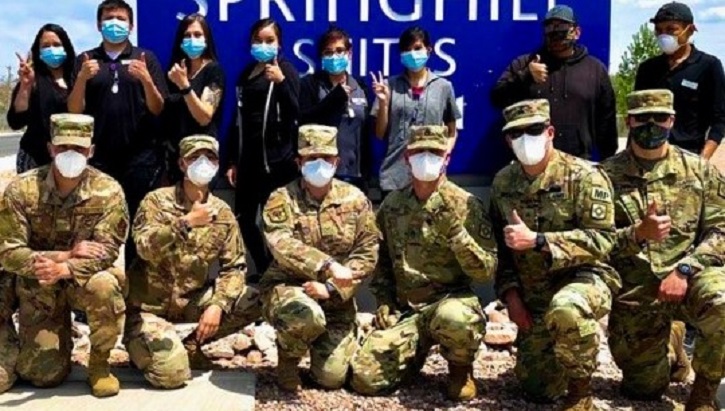
The 150th Security Forces Squadron and the New Mexico National Guard’s Joint Task Force COVID-19 are providing support that may not otherwise be available to New Mexico communities and their citizens.
Building Your Mental Health Through Resiliency
Article
5/29/2020
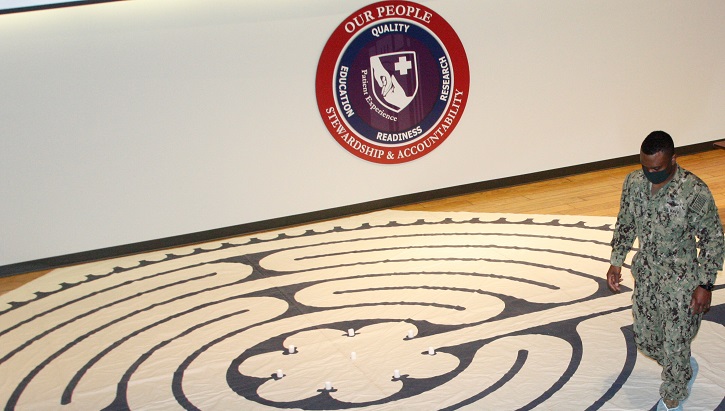
Being able to think about things from a different perspective is critical.
DoD experts address COVID-19 effects on mental health
Article
5/29/2020
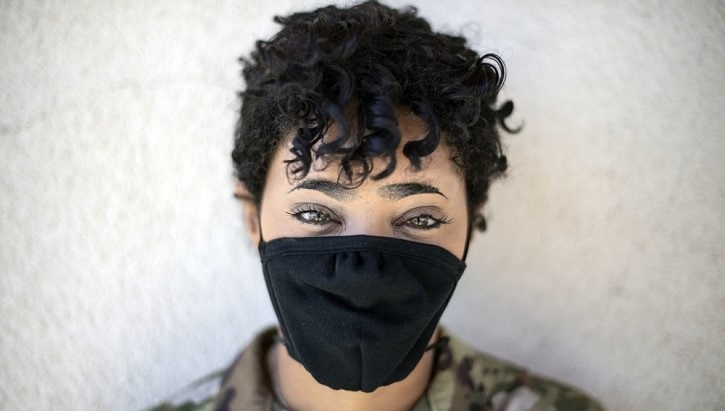
As the world adjusts to a new normal, here’s how to keep mentally healthy.
DoD launches effort to collect COVID-19 convalescent plasma
Article
5/29/2020
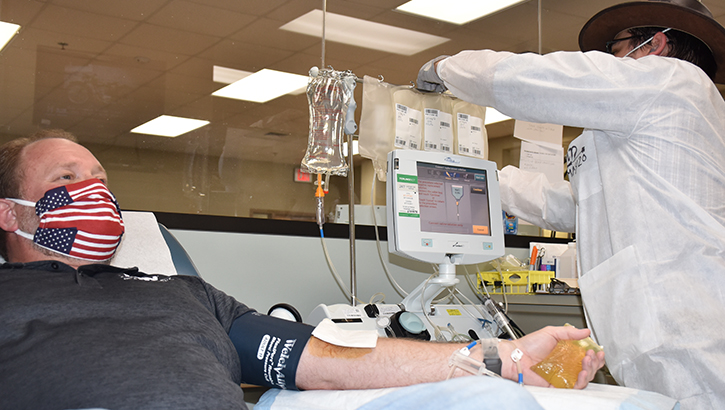
Plasma donations needed in the fight against COVID-19
DOD COVID-19 Survivor Gives Shoutout to Doctors, Plasma Donors
Article
5/29/2020
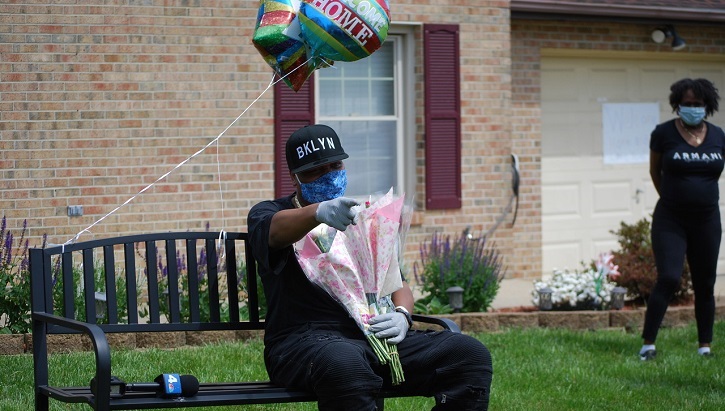
Bright was the first person in the District of Columbia to receive convalescent plasma.
'Home sweet home' leaves a sour taste for some quarantine-weary
Article
5/28/2020

Mental health professionals offer tips on managing during uncertain times
MHS Minute: Military Leading the Charge on COVID-19 Research
Video
5/28/2020
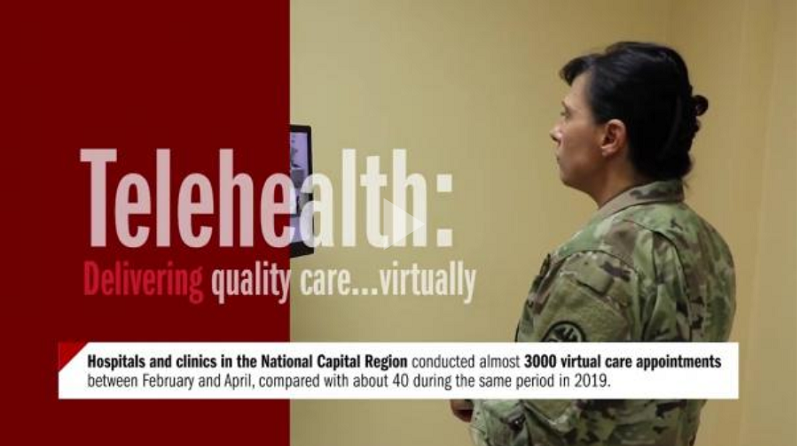
The military continues to serve on the front lines of research and treatment in response to the COVID-19 pandemic. Tune in to the MHS Minute to learn more.






















.png)











No hay comentarios:
Publicar un comentario